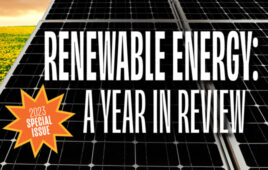Collaboration is the crucial next step in green energy transition
The solar industry is used to being the scrappy underdog. This sector has spent over a decade fighting utilities on net-metering credits, AHJs on permitting timelines and environmentalists on large-scale solar project siting plans. But if the renewable energy industry is set to grow to the scale the government plans in the next 10 years, it’s time to find common ground with traditional adversaries.
It’s starting to happen. Stanford University’s Woods Institute for the Environment convened a 20-month dialogue between solar developers and conservationists that resulted in an agreement to improve large-scale solar development based on the “3C’s” — climate, conservation and community.
“Major U.S. solar projects are critical to fighting climate change but are increasingly opposed across the nation due to significant community and land conservation concerns,” said Stanford energy scholar Dan Reicher, who led the effort. “It’s exciting how motivated the parties are to avoid these conflicts and develop high-impact solutions — a triple play for climate, conservation and community.”
These discussions have also paved the way for a new dialogue to address electricity transmission development for large renewable projects.
While it’s hard to believe the investor-owned utility sector could find common ground with solar advocates, evolving technology could change that. Virtual power plant capabilities, which transform home solar + storage systems into assets that utilities can tap into for power, can provide a win-win to both system owners and the grid. More states are shifting away from offering netmetering credits as their solar markets mature, but fair incentives for opting into virtual power plant scenarios can offset the system costs for homeowners and also provide big benefits to the utilities.
“There’s actually a number of essential services that the solar industry can provide very quickly to help utility companies integrate EV load, manufacturing load, all this load growth that we’re experiencing now,” DOE Loan Programs Office director Jigar Shah told me at RE+. “It’s time for the utility companies to depend on the solar industry to provide the services, and the solar industry to find out from the utility companies how they might be able to invest and install faster.”
The solar workforce is also undergoing changes that require teamwork, with the IRA’s prevailing wage and apprenticeship requirements bringing unions into the solar fold like never before. Partnering with unions is the easiest way to hit apprenticeship metrics for large projects. Three major unions involved in the solar industry — the International Brotherhood of Electrical Workers, Laborers International Union of North America and International Union of Operating Engineers — released a “national tri-trade solar agreement” to outline each union’s role on solar projects, with the goal of making it easier for organized labor and solar developers to form partnerships.
Collaboration with many different entities will be crucial to building out the solar + storagepowered grid that will help offset carbon emissions, provide good-paying jobs to Americans and prioritize protection of native animals and plants. I’m heartened by the early signs of this shift and look forward to what’s ahead. I hope you enjoy reading about these advancements and other developments in federal solar policy in this special issue of Solar Power World.
Kelsey Misbrener
Managing Editor





Tell Us What You Think!